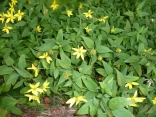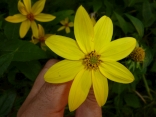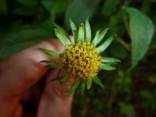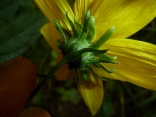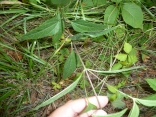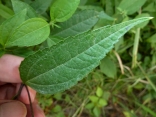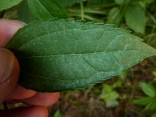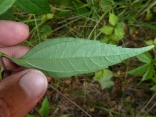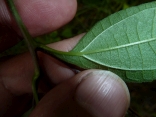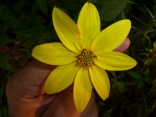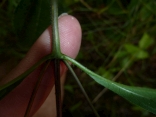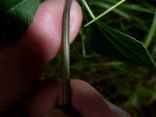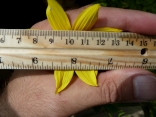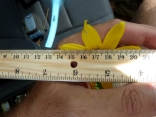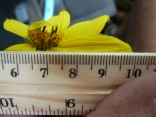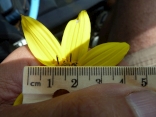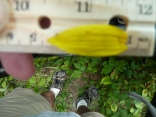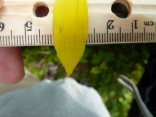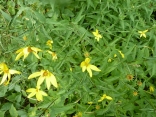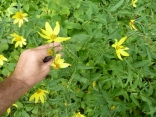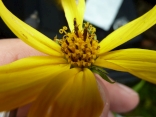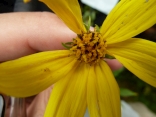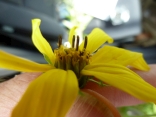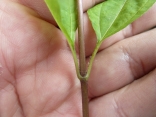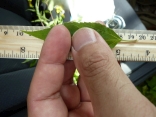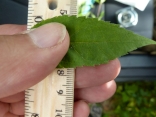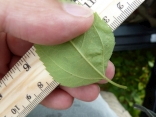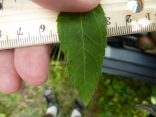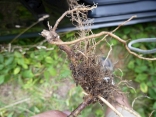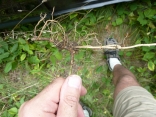I went to the Manual of Vascular Plants of Northeastern United States and Adjacent Canada, but this plant does not perfectly match any of the descriptions. In the book, each plant genus has a flowchart to help you decide on the species, but I discovered that the flowcharts are not always accurate and that reading the species description is more important. For example, the flowchart eventually gets to this species (Helianthus decapetalus) as long as you decide that the disk in the center of the flower is more than 1.5 cm wide. In many cases, however, the disk of this plant is between 1 and 1.5 cm wide. Reading the description of helianthus decapetalus leads one to discover that the disk can be 1-2 cm wide.
Below is a list of the other sunflowers found in New Hampshire and why they are not the plant pictured:
- Common Sunflower (Helianthus annus): Purple flower disk.
- Cucumberleaf Sunflower (Helianthus debilis): Purple flower disk. Oval leaves with long petiole (leaf stem).
- Woodland Sunflower (Helianthus divaricatus): Sessile (no leaf stem) or rarely a leaf stem up to 0.5 cm.
- Sawtooth Sunflower (Helianthus grosseserratus): Long leaves (10-20 cm) that are more than 3 times long as wide. Lower leave surface green (not pale-green).
- Cheerful Sunflower (Helianthus x laetiflorus): Bracket leaves below flower broad, firm and appressed. Very long petiole (up to 5 cm).
- Stiff Sunflower (Helianthus pauciflorus): Red/Purple flower disk.
- Jerusalem artichoke (Helianthus tuberosus): Leaves very large (10-25 cm long and 4-12 cm wide), spreading-hairy stem.
- Paleleaf Woodland Sunflower (Helianthus strumosus): Green bract leaves are not conspicuously ciliate (no conspicuously hairy margins). Very shallowly-toothed leaves.
Thinleaf Sunflower grows up to 54 inches tall. It has yellow flowers with 8-15 petals (1.5-3.5 cm long) and the central part of the flower is made up of numerous tiny flowers each with five petals. Flowers are 4.5-9 cm wide and the central disk is 1-2 cm wide. The leaves are opposite (but upper leaves can be alternate), have 1.5-6 cm petioles, broadly lanceolate or ovate, serrated, 8-20 cm long by 3-8 cm wide, thin, scabrous (rough to touch), pale green beneath and come to a sharp point (accuminate). Leaf base abruptly contracted and decurrent (extends downwards to the petiole.
